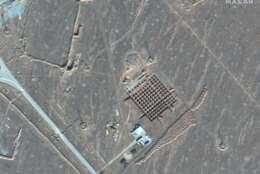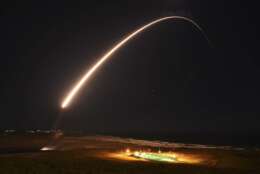Space Operations
-
New study, published this month in the journal Health Sciences Research, projected worse health outcomes for DoD beneficiaries even if as few as 10% of them were shifted to private-sector care.
October 25, 2021 -
The Senate Appropriations Committee unveiled a nearly $726 billion budget for the Defense Department in 2022, putting most of the extra funds in the procurement of new aircraft and ships.
October 19, 2021 -
The agency wants to “know where everything is all the time,” in the words of one official.
October 11, 2021 -
Navigation systems depend on measurement of magnetic forces around the globe, and the satellites that take the measurements are about to age out. But the National Geospatial-Intelligence Agency is on it with a special funding program called the MAGQUEST Challenge.
October 08, 2021 -
The National Reconnaissance Office wants to take advantage of commercial innovation more quickly than it has in the past.
October 08, 2021 -
U.S. spy agencies are increasingly turning to satellite imagery and other geospatial data available on the commercial market.
October 07, 2021 -
The Air Force will hit its goal of recruiting 42,000 people in 2021.
September 23, 2021 -
The new military branch has billed itself as a “start from scratch” enterprise, that won’t be held back by traditions of other military services.
September 21, 2021 -
Jon Harper, managing editor of National Defense Magazine, joins host Derrick Dortch on this week's Fed Access to discuss the Department of Defense’s space efforts and new developments being announced at the 36th Space Symposium.
September 03, 2021 -
Congress is concerned that after nearly two years the Space Force doesn't have much to show.
August 05, 2021 -
Funding shortfalls will have serious consequences in the final quarter of this fiscal year because of unexpected bills related to security at the Capitol, National Guard officials warn.
July 19, 2021 -
The space agency is using temporary agreements to test out satellite imagery and other products with a view toward working more closely with start-up companies.
July 09, 2021 -
The office plans to award its 55th contract by the end of the year.
July 08, 2021 -
The funds would be taken from lesser used programs and savings from some procurement efforts.
July 07, 2021 -
The service released a strategy in May to lay out how it would reach that goal, and now it’s putting some of it into practice.
June 16, 2021















